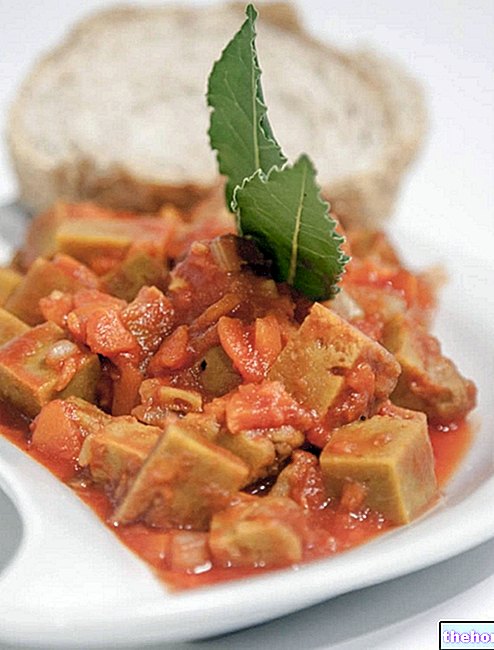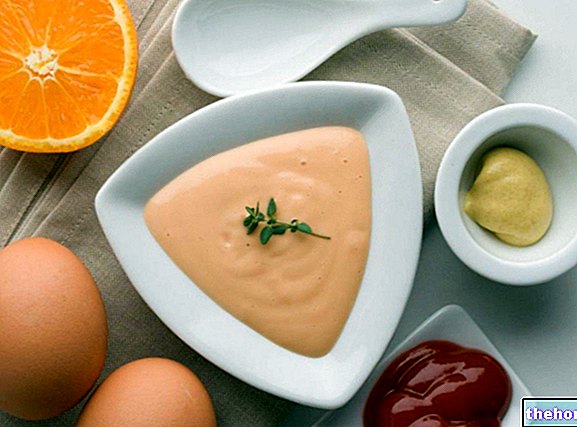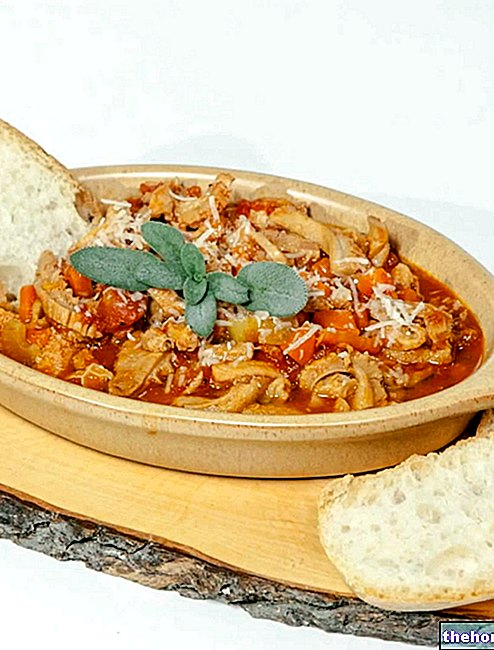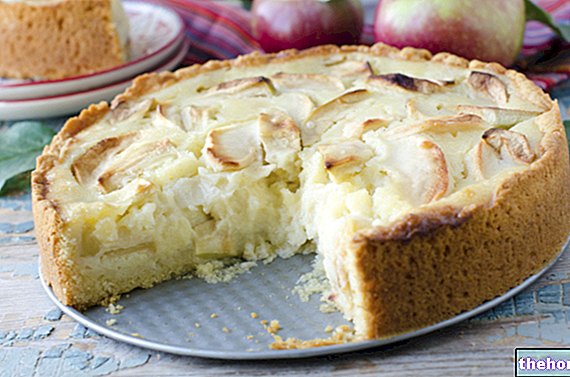What would Christmas be without pandoro? A beloved and prestigious sweet of traditional Venetian pastry, pandoro is the emblem of the Christmas sweet, whose recipe for years has been kept hidden as a precious treasure by the pastry chefs who gave life to this wonderful 8-pointed leavened star.
Today we will roll up our sleeves and challenge the skill of the chefs with doughs and rolling pin turns, to forge the pandoro with our hands, which proudly bears this name in memory of its ancient origins, in which this sort of enriched sweet bread was served on a gold leaf.
Video of the Recipe
Problems with playing the video? Reload the video from youtube.
Identity Card of the Recipe
- 357 KCal Calories per serving
-
Ingrediants
For the fourth processing
- 100 g of butter
For the first dough (leavened)
- 50 g of Manitoba flour
- 7 g of brewer's yeast
- 30 ml of milk
- 1 teaspoon of powdered sugar
For the third dough
- 1 sachet of vanillin or 1 vanilla flavor
- 1 pinch of salt
- 110 g of powdered sugar
- 30 g of butter
- 20 g (1 medium) of egg yolks
- 120 g (2 medium) of eggs
- 280 g of Manitoba flour
For the second dough
- 20 ml of milk
- 7 g of brewer's yeast
- 40 g (2 medium) of egg yolks
- 40 g of powdered sugar
- 30 g of butter
- 120 g of Manitoba flour
Materials Needed
- Bowls of different sizes
- Wooden spoons
- Transparent film
- Rolling pin
- 500 g pandoro mold
- Thermometer to monitor the temperature
- Pastry board
- Brush
- Nylon bags
- Colander
- Latex gloves (optional)
Preparation
The preparation of the pandoro is extremely long and rather complex and laborious. It is therefore necessary to strictly respect the rising and resting times in the different phases and, clearly, the doses of the ingredients.
- FIRST PHASE: PREPARATION OF THE YEAST
Dissolve 7 g of brewer's yeast in 30 ml of warm milk, sweetened with a teaspoon of powdered sugar. In a small bowl, pour 50 g of Manitoba flour and mix with the sweetened milk and the dissolved yeast. Mix thoroughly and for a long time (for a few minutes), until obtaining a ball with a rather compact and smooth consistency.
Leave to rise in a warm environment until doubled in volume (for about an hour). The ideal would be to let the dough rise in an environment with a temperature between 30 and 34 ° C: for this reason, it is advisable to let the ball of dough rest in the off oven, previously warmed to a temperature of 160 ° C. for a few minutes.- SECOND PHASE: PREPARATION OF THE INTERMEDIATE DOUGH
In a small bowl pour 120 g of Manitoba flour, 40 g of powdered sugar, 2 egg yolks, 30 g of softened butter (which must not be melted anyway) and mix well with 7 g of brewer's yeast dissolved in 20 ml of milk tepid.
From the union of the ingredients you will get a rather sticky ball, which will then be combined with the leaven. Then combine the two doughs until you get a homogeneous mixture.
Let it rest once more until the ball doubles in volume (about an hour).- THIRD PHASE: PREPARATION OF THE THIRD DOUGH
This phase involves the preparation of a third dough, which will then be added to the previous one.
In a large bowl, pour 280 g of Manitoba flour, 2 eggs and one yolk, 30 g of butter softened at room temperature, 110 g of powdered sugar, a pinch of salt and the vanilla flavor. Then add the previous mixture and mix the ingredients perfectly, kneading by hand.
Let the mixture rest in a large bowl at a temperature of 30-34 ° C for a couple of hours: the rising time is longer because the ingredients weigh down the dough and the yeast needs more time to ferment.- FOURTH PHASE: PROCESSING THE BUTTER (first round of dough)
All the ingredients have been added, with the exception of a part of butter (100 g): it is therefore time to imprison (be careful, do not knead!) The butter inside the dough.
At this point, the pandoro ball will have become very swollen, although the consistency will have to remain compact. Spread the dough with your hands and, with a rolling pin, roll out the dough to form a square with a thickness of about 9-10 mm. Separately, mix the butter with a handful of flour, then transfer the sticky ball of butter to the center of the square. Starting from the corners of the square, build a bundle, tightening the sides well to prevent the butter from running out. Roll out the bundle again with a rolling pin until you get a rectangular ribbon. Now we proceed just like the puff pastry, making the so-called “rounds of dough”: fold the rectangle of dough in three, bringing the shorter sides to the center; then roll out the folded dough again with a rolling pin to distribute the butter evenly and gradually, and fold again in three (we recommend that you refer to the video).
Wrap the dough in cling film and, after closing it in a nylon bag, let it rest in the fridge for 30 minutes.- FIFTH PHASE: SECOND ROUND
After half an hour, the dough is ready for another round. Roll out the dough again until it forms a rectangle (you can help yourself with a little flour to prevent the butter from escaping); then fold it in three ("book folding") and let it rest again as explained in point 4.
- SIXTH PHASE: THIRD ROUND
We have reached the last lap: gently roll out the dough into a rectangle, fold in three and let it rest in the fridge for another 30 minutes. At this stage, the butter will be perfectly distributed throughout the dough, consequently the drafting of the dough will be easier.
- SEVENTH PHASE: FINAL LEAVENING
After 30 minutes, roll out the dough again until it forms a square; therefore fold into a bundle. At this point, also fold the corners of the bundle towards the center, to give the shape of an irregular ball. Brush everything with a little melted butter and insert the dough (with the smooth side up) into a pandoro mold previously greased with a little melted butter.
Let the dough rest in the mold, at a temperature of 30-34 ° C for 8-10 hours, until the pandoro exceeds the edges of the mold.- EIGHT PHASE: COOKING
Bake the pandoro in a hot oven at 180 ° C for 15 minutes. After this time, lower the temperature (without opening the oven door) to 130 ° C and continue for another 15-20 minutes.
Allow to cool for 15 minutes and gently remove the pandoro from the mold: you can facilitate the operation by slowly opening the points of the star.
Serve cold, with a sprinkling of powdered sugar.Alice's comment - PersonalCooker
Just like Romeo and Juliet, Pandoro is divinely accompanied by a glass of Recioto di Valpolicella: the candid sweet seems to personify the beautiful girl in love, while the vigorous Recioto di Valpolicella is the strong and gentle Romeo.
also try the recipe for easy Pandoro with chocolate chips and Panettone!Nutritional values and Health Comment on the recipe
Homemade Pandoro is a typical Christmas leavened cake. It is a fairly energetic preparation, rich in carbohydrates (simple and complex), with a relatively low amount of protein (medium and high biological value) and a substantial portion of fat. Regarding the latter, the prevalence of saturated fatty acids and the generous presence of cholesterol exclude Homemade Pandoro from the hypercholesterolemic diet. Furthermore, the considerable glycemic load does not seem suitable for the diet for diabetes or even for that of " hypertriglyceridemic; in order to be contextualized in these nutritional regimes, the portions of consumption of Homemade Pandoro should be so low as not to be considered reasonable. Homemade Pandoro contains gluten and cannot be taken by celiacs; furthermore, the small quantities of lactose could bother intolerant subjects more sensitive to this disaccharide The average portion (for the healthy subject) of Homemade Pandoro is about 30-35g (105-125kcal).






---formaggio-vegetale-con-latte-di-semi-di-canapa.jpg)





















